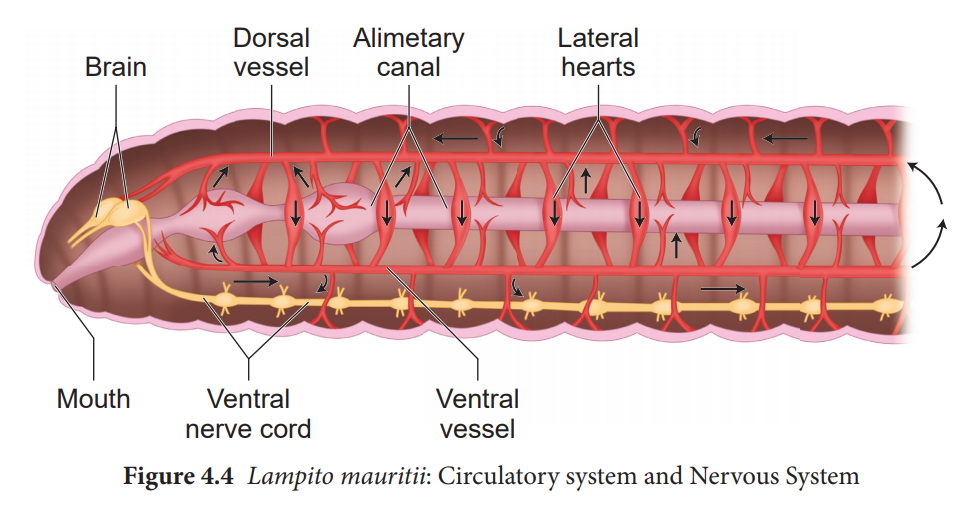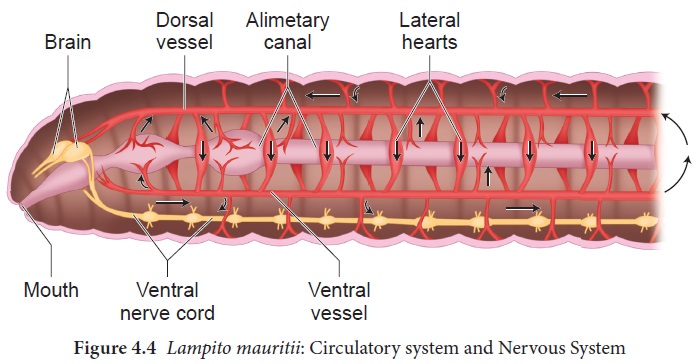Chapter: 11th Zoology : Chapter 4 : Organ and Organ Systems in Animals
Circulatory and Nervous system of Earthworm (Lampito mauritii) Anatomy

Circulatory system
Lampito
mauritii exhibits a closed type of blood vascular system consisting of blood
vessels, capillaries and lateral hearts (Figure 4.4). Two median longitudinal
vessels run above and below the alimentary canal as dorsal and ventral vessels
of the earthworm. There are paired valves in the dorsal vessels which prevent
the backward flow of the blood. The ventral vessel has no valves and is non
contractile, allowing the backward flow of blood. In the anterior part of the
body the dorsal vessel is connected with the ventral vessel by eight pairs of
commissural vessels or the lateral hearts lying in the 6th
to 13th segments. These vessels run on either side of the alimentary canal and
pump blood from the dorsal vessel to the ventral
The ventral
vessel supplies blood to the various organs. Blood glands are present in the
anterior segments of the earthworm. They produce blood cells and haemoglobin
which is dissolved in the plasma and gives red colour to the blood.
Nervous System
The
bilobed mass of nervous tissue called supra - pharyngeal ganglia, lies on the
dorsal wall of the pharynx in the 3rd segment, is referred as the “brain”. The
ganglion found below the pharynx in the 4th segment is called the
sub-pharyngeal ganglion (Figure. 4.4). The brain and the sub - pharyngeal
ganglia are connected by a pair of circum-pharyngeal connectives. They run one
on each side of the pharynx. Thus a nerve ring is formed around the anterior
region of the alimentary canal. The double ventral nerve cord runs backward
from the sub - pharyngeal ganglion. The brain along with other nerves in the
ring integrates sensory inputs and command muscular responses of the body.

The
earthworm’s receptors are stimulated by a group of slender columnar cells
connected with nerves. The Photoreceptors (sense of light) are found on the
dorsal surface of the body. Gustatory (sense of taste) and olfactory receptors
(sense of smell) are
found in the buccal cavity. Tactile
receptors (sense of touch), chemoreceptors
(detect chemical changes) and thermoreceptors
(changes in temperature) are present in the prostomium and the body wall.
Related Topics